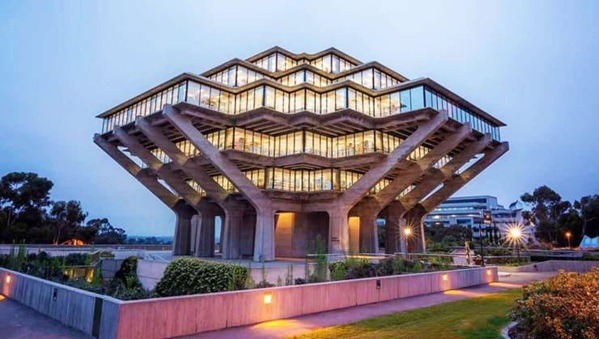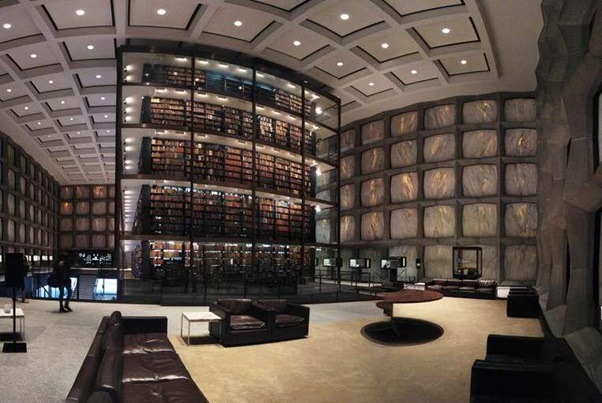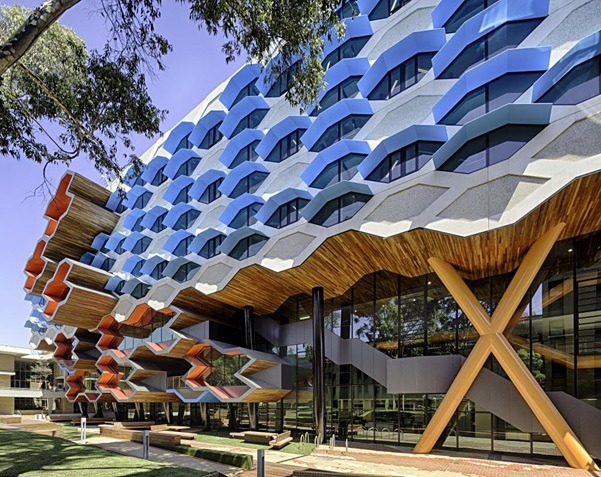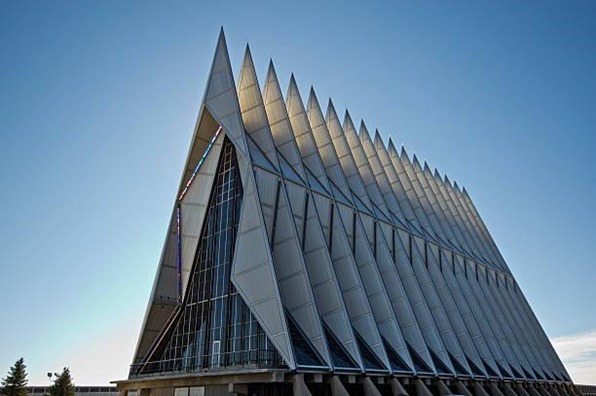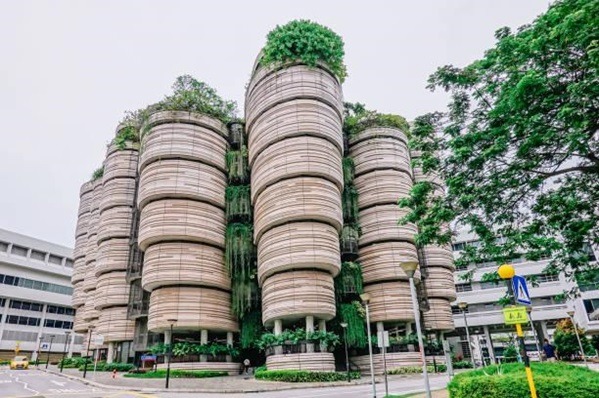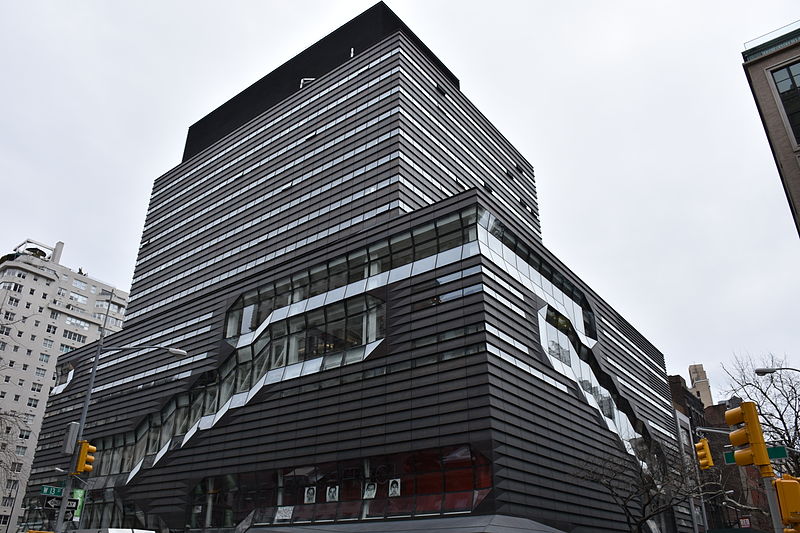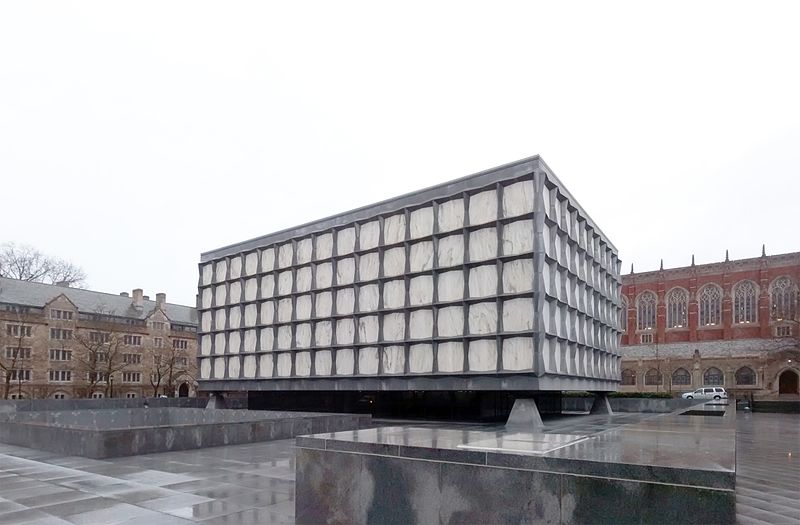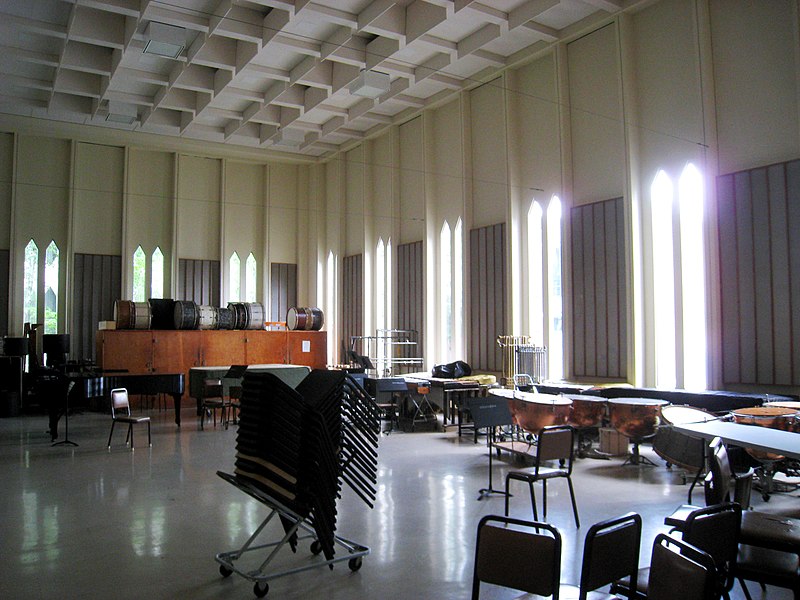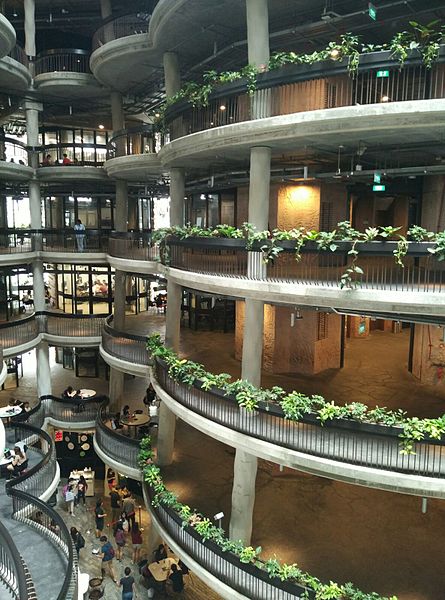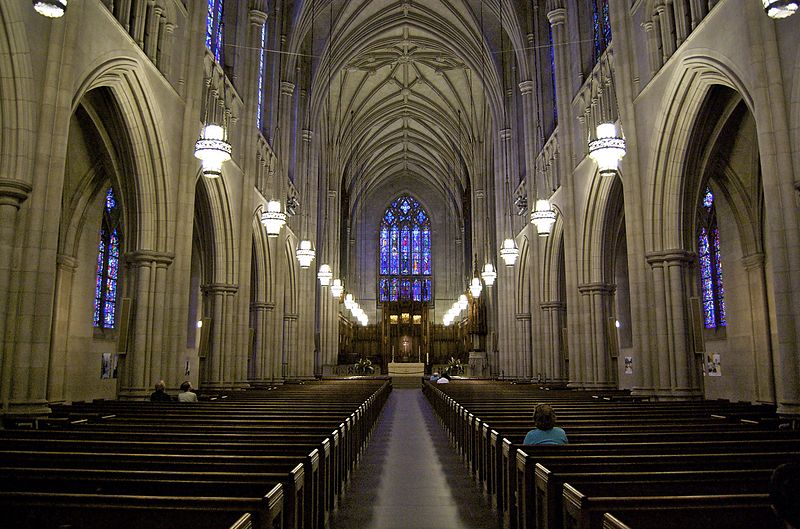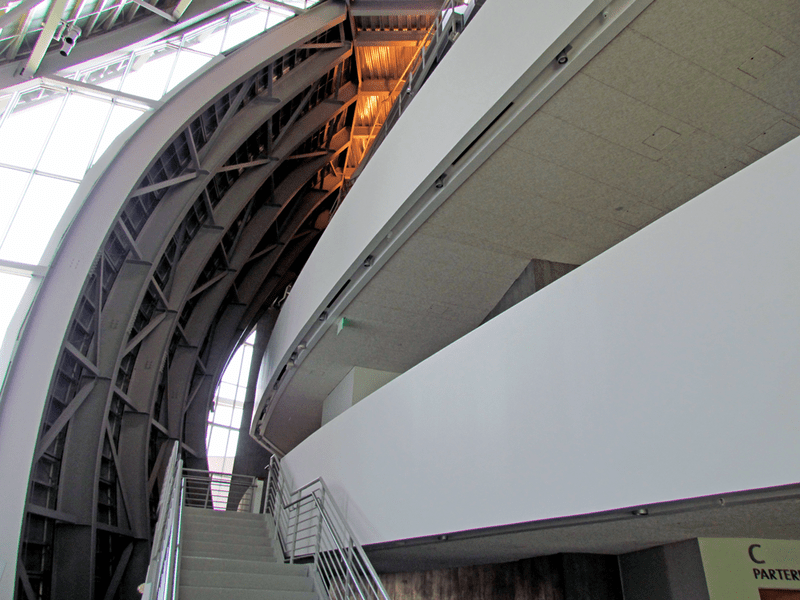University structures are usually impressive, but we’ve spotted some innovative buildings with state-of-the-art architecture. These architectural masterpieces can ignite creativity, propel imagination, and sustain concentration.
Since students spend most of their college years inside the faculties, the school buildings need to be magnificent and picturesque. Most top-tier universities understand this fact and try to put up impressive structures that leave students in awe.
In this piece, we’ll check out the top university buildings that can enhance the college experience. So find a reliable writing service where you can order essay, complete your assignments and let’s watch campus structures top the charts.
The New School, University Center
The New School is a private, non-profit research university with trustees and leaders in American politics. After much deliberation, the New School was built on a 375,000-square-foot active-design center.
The New School building has classrooms, student housing, an auditorium, dining areas, retail centers, a library, and a faculty resource center.
If you think getting a professional essay writing service is expensive, you haven’t seen this university. The New School is situated in an expensive area in New York, perhaps justifying this extravagance. At least you can find an affordable service by checking these Essay Hub reviews.
Beinecke Rare Book & Manuscript Library, Yale University
Yale University is a compendium of mind-blowing structures, but Beinecke Rare Book & Manuscript Library stands out. Externally, the library resembles a windowless shoebox featuring a Vermont Woodbury granite framework.
When you walk inside, the marble shines due to sunlight and protects the glass book enclosure from direct sun rays. The library is a spacious storied room filled with leather chairs and shiny tables. You’ll also find one of the 48 copies of the Gutenberg Bible.
Conservatory of Music, Oberlin College
You will encounter the Oberlin College Conservatory of Music wherever spectacular campus buildings are discussed. It is also the oldest operational conservatory in the United States.
This building consists of three interconnected buildings designed by Minoru Yamasaki, the same architect who designed the World Trade Center. It houses over 150 practice rooms and concert and recital halls for Oberlin’s music students.
Weisman Art Museum, University of Minnesota
The Weisman Art Museum was designed by Frank Gehry, who designed the Walt Disney Concert Hall in LA. This building is proof that museums can be mysterious yet attractive.
This art museum has two faces. On one side, a brick façade fits well with historic buildings around the museum, including the Northrop Mall. The other side is shrouded with Gehry’s unique steel sheets, having a curving and angular design.
La Trobe Institute for Molecular Science, La Trobe University
It’s impossible to walk past the La Trobe Institute for Molecular Science without throwing a second glance. As the name implies, Melbourne’s campus is adorned with a building inspired by molecular structures and atomic chemistry.
No wonder its windows look like chemically bonded atoms – colorful yet striking. Also, the pillars are structured like X’s and Y’s to symbolize chromosomes.
Cadet Chapel, United States Air Force Academy
This inter-denominational Cadet Chapel attracts 500k+ visitors than most buildings in Colorado. Its stunning yet modern exterior is quite uncharacteristic of church buildings.
Cadet Chapel has 17 angular spires formed out of aluminum, glass, and steel up to 150 feet. It’s covered with stained glass windows from floor to ceiling, adding to its glow. These tall windows also enhance the majestic view of the entire campus and the countryside.
The Hive, Nanyang Technological University
Impressive circular structures are not so popular on campus, but The Hive surmounts this barrier. The Hive is a learning hub shaped like a bee hive and resembles dim sum baskets.
It’s located at Nanyang Technological University, Singapore, and designed to aid the flipped classroom teaching method. At this university, students take their lecturers online and come to campus to attend discussion-based lessons.
Geisel Library, University of California-San Diego
The Geisel Library is another iconic Gehry masterpiece. Few buildings have carved a place in pop culture, including this magnificent library.
It is situated at the center of UC San Diego and lighted like a futuristic tree house or an alien spaceship. But this building has been around since 1970, and it’s surprising how it has maintained relevance.
Duke Chapel, Duke University
Duke Chapel is one of the finest gothic structures located on the highest ridge of the West Campus. This 1,800-seater chapel is one of the tallest buildings in Durham County, covered with 77 stained glass windows.
These aren’t just ordinary windows but are constructed from over one million individual pieces of glass from England, France, and Belgium. Duke Chapel is carefully designed by Julian Francis for the non-profit research university affiliated with the Methodist Church.
Fisher Center for the Performing Arts, Bard College
The Fisher Center looks like a protective shield, and it’s easy to connect the design to Frank Gehry. Despite Bard College’s size, it is home to one of the most outstanding centers for the Performing Arts in the U.S.
This building is a $62 million, geothermally-powered masterpiece that is acoustically tuned. For a college with roughly 2,000 students, it’s quite an extravagant structure built on 107,000 square feet. But it’s perfect for students who want to attend a small private college with a higher focus on the arts.
Uniqueness
The New School, University Center
- Sustainable design – The University Center was built concerning to the environment, earning it a LEED Gold certification from the United States. Sustainable Building Council. A green roof, a rainwater collection system, and energy-efficient mechanical systems are some of the sustainable aspects of the structure.
- Flexible space – Flexible rooms that are simple to rearrange to suit a range of applications were included in the University Center’s design. A variety of events and activities can be accommodated in the building’s classrooms, lecture halls, performance spaces, galleries, and student lounges.
- Innovative technology – Modern technology that supports interactive learning and collaboration is available at the University Center. The structure houses, among other cutting-edge amenities, a digital media hub, a high-tech library, and a lab for digital journalism.
- Unique architecture – The architecture of the University Center is distinctive and contemporary, with a sleek and angular style. The front of the building is a louvered glass curtain wall that lets in natural light and aids in temperature control.
- Central location – The University Center is conveniently placed in the center of Greenwich Village in New York City, making it accessible to faculty, staff, and visitors. The central location of the building gives students the chance to interact with the city’s thriving intellectual and cultural community.
Beinecke Rare Book & Minuscript Library, Yale University
- Unique architecture – The Beinecke Library’s design is genuinely distinctive and remarkable. The library’s rare book and manuscript collections are housed in a six-story glass stack tower that is a showpiece of the structure. A shell of Vermont marble encircling the tower allows diffuse light to enter the inside, fostering a dramatic and otherworldly ambiance.
- Valuable collections – The rich and priceless collections in the Beinecke Library rank among the best in the entire world. Around a million books, including rare books, manuscripts, and archives, are housed in the library. The Gutenberg Bible, the Voynich Manuscript, and a collection of Lewis Carroll’s manuscripts are a few of the library’s most well-known items.
- State-of-the-art-preservation – Modern methods and tools are used by the Beinecke Library to maintain its priceless holdings. Modern preservation tools and knowledgeable conservators work to guard against material deterioration and damage in the library’s state-of-the-art preservation laboratory.
- Accessibility – The library’s collections are priceless and uncommon, yet they are also open to researchers and the general public. Researchers from all around the world can access the collections and receive research support from the library personnel.
- Cultural icon – The Beinecke Library is a cultural landmark in addition to being a useful and important resource for academics. It is a popular location for tourists and guests to Yale University due to its spectacular architecture and rare collections.
Conservatory of Music, Oberlin College
- Pioneering tradition – In the field of music education, the Conservatory of Music has a long history of innovation and advancement. It was the first music conservatory in America to admit women and African Americans, and by embracing multidisciplinary courses and new technology, it has constantly pushed the limits of music education.
- Elite faculty – A distinguished faculty of musicians and academics with international acclaim works at the Conservatory of Music. Several faculty members are distinguished performers, composers, and conductors who offer the institution a wealth of knowledge and experience.
- State-of-the-art facilities – Modern amenities are available at the Conservatory of Music, enabling students to study and perform music at the greatest levels. The institution offers top-notch practice rooms, recording studios, and performance facilities that are created to foster the greatest levels of musical achievement.
- Strong community – The community of students, teachers, and staff at the Conservatory of Music is vibrant and encouraging. Students are encouraged to explore their musical talents while simultaneously interacting with other academic fields and the larger Oberlin community because the institution promotes collaboration and cross-disciplinary work.
- Emphasis on social justice – Several of the Conservatory of Music’s programs and initiatives show how seriously it takes social justice and action. The school actively works to promote diversity, equity, and inclusion within the music industry and offers courses and activities that examine the relationship between music and social justice.
Weisman Art Museum, University of Minnesota
- Striking architecture – The Weisman Art Museum’s design is genuinely distinctive and memorable. The building, created by renowned architect Frank Gehry, stands out amid other campus structures thanks to its gleaming stainless steel front and angular shape. The interior rooms, which feature different design elements and light-filled galleries, are just as stunning.
- Diverse collections – The collections at the Weisman Art Museum are extensive and diversified, encompassing a wide range of artistic disciplines and media. Almost 25,000 pieces of art, including ceramics, paintings, prints, and sculptures, are part of the museum’s permanent collection. The museum also holds a range of themes and viewpoints’ temporary exhibitions.
- Community engagement – The Weisman Art Museum is devoted to interacting with its neighborhood and fostering chances for discussion and cooperation. In order to examine and debate art and its place in society, the museum sponsors a number of events and programs that bring together artists, academics, and people of the local community.
- Accessibility – The Weisman Art Museum is dedicated to ensuring that art is accessible to everyone, and this dedication is reflected in both its collections and programs. The museum offers free entry as well as a range of outreach and educational activities that cater to a variety of audiences, including K–12 students, elderly, and people with disabilities.
- Integration with university life – The academic and cultural activity of the institution is perfectly incorporated with that of the Weisman Art Museum. The museum regularly incorporates its resources into the curriculum and presents a range of lectures and events that support and advance the university’s academic goals.
La Trobe Institute for Molecular Science, La Trobe University
- Interdisciplinary research – The multidisciplinary approach to molecular science research used by LIMS, which brings together specialists from a number of disciplines including chemistry, physics, and biology, is well known. This multidisciplinary approach enables researchers to take on challenging issues and create ground-breaking solutions that include knowledge from several specialties.
- State-of-the-art facilities – Modern research facilities at LIMS enable scientists to carry out state-of-the-art molecular science research. The institute is equipped with a variety of cutting-edge tools, such as X-ray crystallography facilities, mass spectrometers, and nuclear magnetic resonance (NMR) spectrometers.
- Industry partnerships – Strong collaborations between LIMS and a variety of industry partners, such as biotech and pharmaceutical firms, enable academics to apply for funding for their work in practical settings and create answers to real-world issues.
- International collaboration – LIMS has a strong reputation for international collaboration, with academics from around the world working together on a range of molecular scientific initiatives. By taking a global perspective, LIMS can continue to be a leader in molecular science research and create ground-breaking answers to global issues.
- Research impact – Several of LIMS’s research findings have had a substantial positive impact on the field of molecular science, demonstrating the strength of its record of research impact. The institute’s researchers have made significant contributions to a variety of disciplines, including environmental science, materials science, and medication discovery.
Cadet Chapel, United States Air Force Academy
- Architectural design – One of the most notable aspects of Cadet Chapel is its remarkable design. The structure was created by renowned architect Walter Netsch and has a row of 17 spires that rise 150 feet above the ground. The structure is a “masterpiece of modern architecture,” with a stunning and attractive aesthetic.
- Interfaith worship – All cadets are welcome to attend religious services in Cadet Chapel, which hosts Protestant, Catholic, Jewish, Muslim, and Buddhist services. The United States Air Force Academy prides itself on its dedication to interfaith worship and inclusivity, which also reflects the values of the Air Force as a whole.
- Historical significance – The history of the United States Air Force Academy and the Air Force more widely has been significantly influenced by Cadet Chapel. Since its dedication in 1963, the chapel has come to represent the academy and its goals. A number of American presidents’ weddings as well as other significant events and ceremonies have taken place in the structure.
- Location – Another distinctive feature of the structure is its position on the campus of the United States Air Force Academy. Since the chapel is located at the foot of the Rocky Mountains, it has a beautiful backdrop and is a well-liked tourist attraction.
- Educational opportunities – Both cadets and guests can learn something new during Cadet Chapel. The chapel has a number of exhibits and displays that discuss the chapel’s history, relevance, and the place of religion in the Air Force.
The Hive, Nanyang Technological University
- Architectural design – One of the most distinctive aspects of The Hive is its unusual design. A group of architects from the Thomas Heatherwick firm created the structure, which has a center atrium and a succession of 12 towers. Sky bridges connect the towers, which provide a variety of areas for studying, working together, and socializing.
- Sustainable features – The Hive is a sustainable structure that includes several green design elements. The building’s design allows for natural ventilation and illumination to lower the building’s energy usage, and its roof is covered in photovoltaic cells that produce energy. To use less water, The Hive has technologies for collecting rainwater and recycling it.
- Flexible learning spaces – The design of The Hive is based on the notion of developing adaptable learning environments that can accommodate a variety of various teaching and learning philosophies. The central atrium offers a location for informal learning and socializing, while the building’s towers provide a variety of areas that can be utilized for lectures, seminars, group work, and solitary study.
- Technological integration – The design of The Hive is based on the notion of developing adaptable learning environments that can accommodate a variety of various teaching and learning philosophies. The central atrium offers a location for informal learning and socializing, while the building’s towers provide a variety of areas that can be utilized for lectures, seminars, group work, and solitary study.
- Community building – The Hive’s goal is to strengthen the sense of belonging among NTU staff and students. The structure’s open layout and connected areas promote communication and social interaction, and its prime location on campus makes it a centre for student life.
Geisel Library, University of California-San Diego
- Architectural design – One of the Geisel Library’s most striking characteristics is its remarkable design. Famous architect William Pereira is responsible for the structure’s eye-catching modernist design, which incorporates geometric shapes and angles. It has been said that the structure is a “masterpiece of brutalist architecture.”
- Innovative technology – Many cutting-edge tools that improve learning and research are available at the Geisel Library. A cutting-edge media center, a computer lab, and a variety of online tools and databases are some of these.
- Special collections – A variety of special collections and records, many of which are rare and priceless to academics and researchers, can be found at the Geisel Library. The papers of Theodore Geisel (commonly known as Dr. Seuss), after whom the library is named, are among them. Other categories include collections on the history of science fiction, political posters, and ephemera.
- Sustainable features – Several environmentally friendly elements that The Geisel Library uses lessen its influence on the environment. They include solar panels, a green roof, and a rainwater collection system that is used for irrigation.
- Community building – A gathering place for the UCSD community, the Geisel Library offers a variety of areas for studying, conducting research, and socializing. The library provides quiet study places, venues for group discussion, and inviting reading areas that promote involvement and community building.
Duke Chapel, Duke University
- Architectural design – One of The Duke Chapel’s most recognizable features is the magnificent Gothic Revival architecture. Horace Trumbauer’s architectural firm was responsible for the building’s design, which features a variety of architectural features such ornate masonry, vaulted ceilings, and stained glass windows. The 210-foot tower of the chapel is visible from all parts of the Duke University campus.
- Spiritual and cultural significance – For the Duke University community and beyond, Duke Chapel serves as a crucial hub of culture and religion. Many religious services, including those for the Presbyterian and United Methodist faiths, are held at the chapel. It also acts as a venue for various cultural events including concerts and seminars.
- Historical significance – A historically significant structure, Duke Chapel has participated in numerous notable events throughout the university’s history. Since its dedication in 1932, it has been used as a location for worship, introspection, and community development. The Rev. Dr. Martin Luther King Jr. delivered a sermon in the chapel in 1960 that is recognized as one of his most important lectures.
- Artistic features – Duke Chapel has a number of aesthetic characteristics that enhance its beauty and significance. A 75-rank pipe organ, a 50-bell carillon that can be heard throughout the Duke University campus, and a variety of breathtaking stained glass windows that feature images from the Bible and other religious and cultural traditions are among these.
- Community building – The Duke University community gathers in Duke Chapel, which offers a variety of places for spiritual reflection, community development, and interaction. The chapel hosts a variety of activities and services that promote involvement and community building among students, professors, and staff.
Fisher Center for the Performing Arts, Bard College
- Architectural design – One of The Fisher Center’s most defining characteristics is its magnificent architectural style. The structure features a variety of architectural features, including a stunning curved roof and glass curtain walls that offer expansive views of the surrounding area. It was created by renowned architect Frank Gehry.
- State of-the-art technology – Modern technology is available at the Fisher Center to improve the performing arts experience for both artists and audiences. This consists of a cutting-edge lighting setup, sound setup, and projection setup that enable cutting-edge performances and productions.
- Versatility – The structure has a number of performing venues, including a dance studio, a black box theater, and a concert hall with 900 seats. The Fisher Center can hold a variety of events and performances, from concerts and plays to operas and dance performances, due to its versatility.
- Accessibility – The Fisher Center is meant to be accessible to a wide range of audiences, including individuals with impairments. All guests may take part completely in the performing arts experience because of the facility’s features including accessible seating, assisted listening equipment, and other amenities.
- Community engagement – The Fisher Center acts as a focal point for neighborhood involvement and outreach, offering a variety of educational initiatives, training sessions, and residencies that link the performing arts with the general public. In addition to residencies for artists that enable performers to interact with the college and the larger community, this also includes initiatives for nearby schools and community organizations.
Conclusion
While you shouldn’t be too concerned about stunning architecture when choosing a university, it sure helps to attract potential students. Campus buildings pay incredible attention to structural design and work hard to attach deep meaning to these designs.
Attending a college with astonishing libraries and chapels can boost your morale as a student. You’ll also remember the lovely campus sights and smile long after you’ve graduated.

